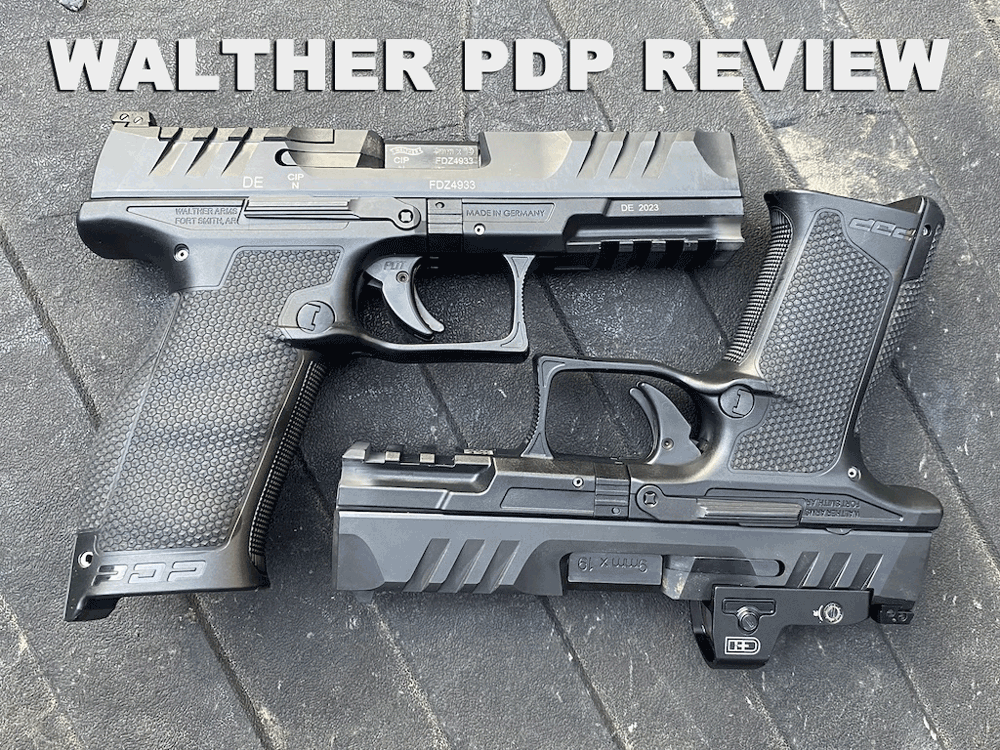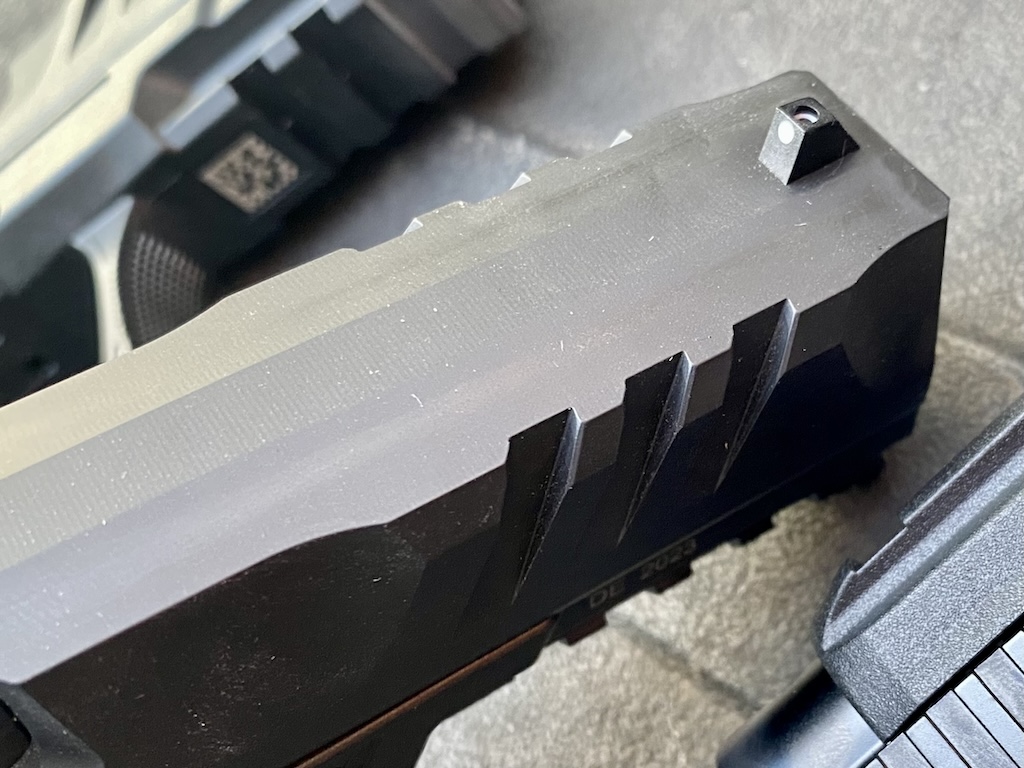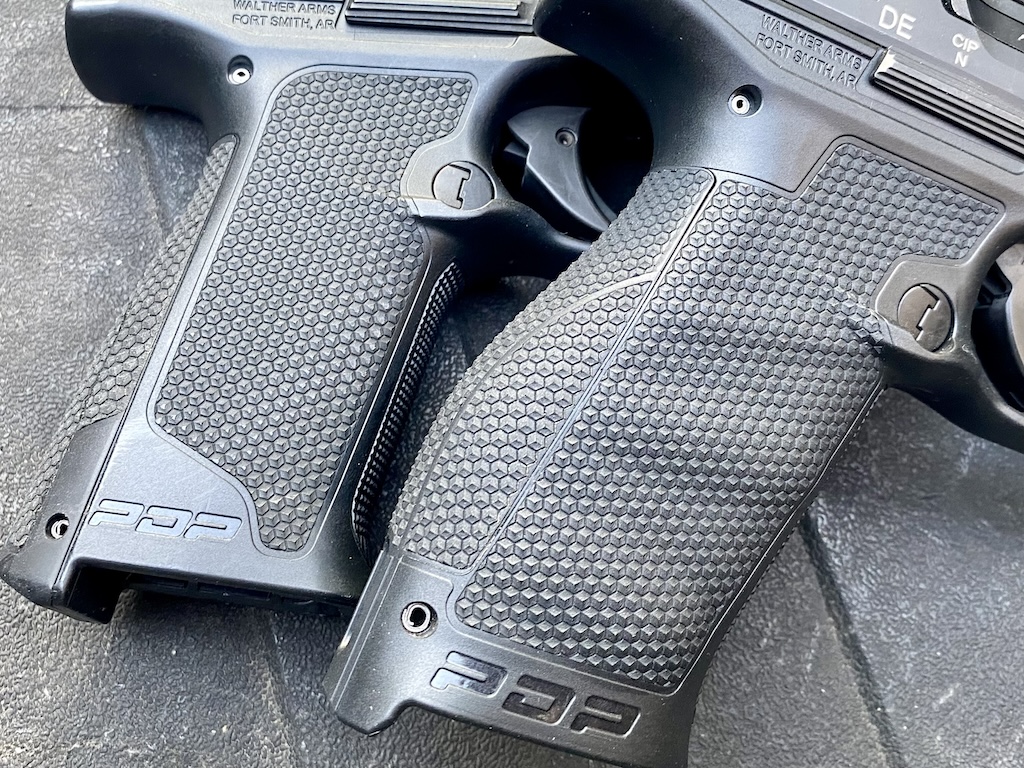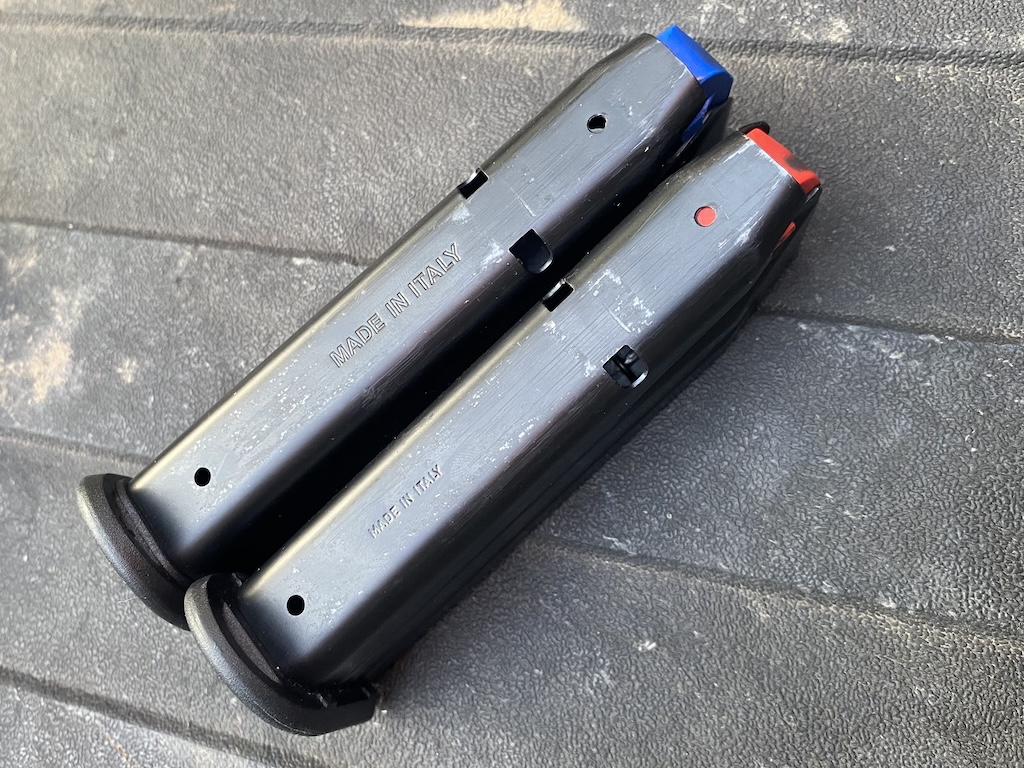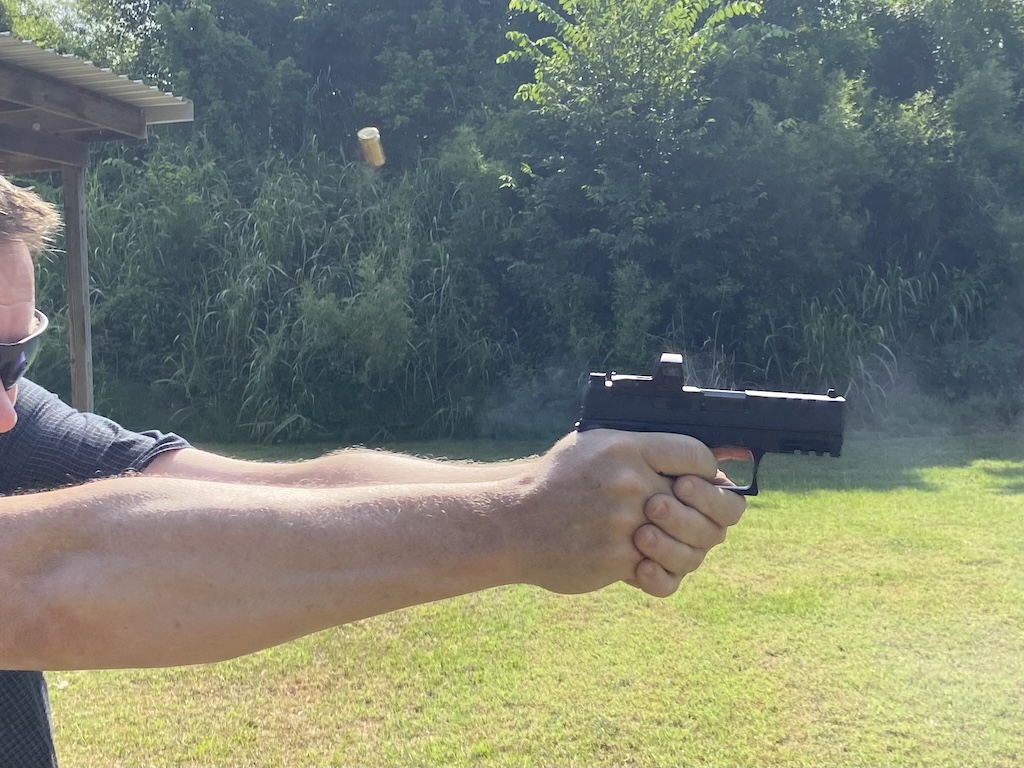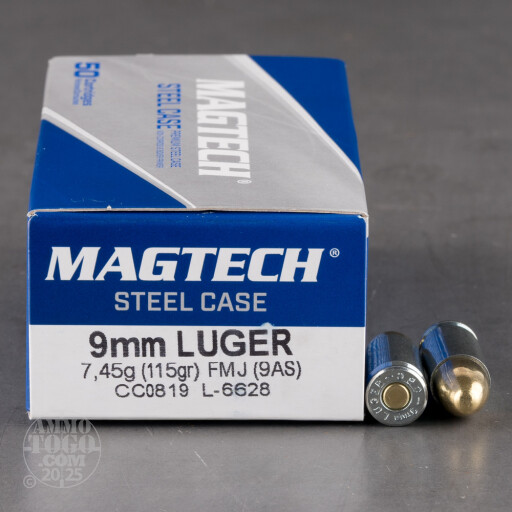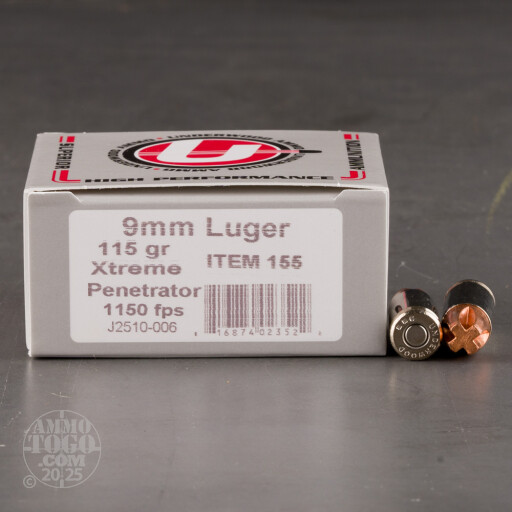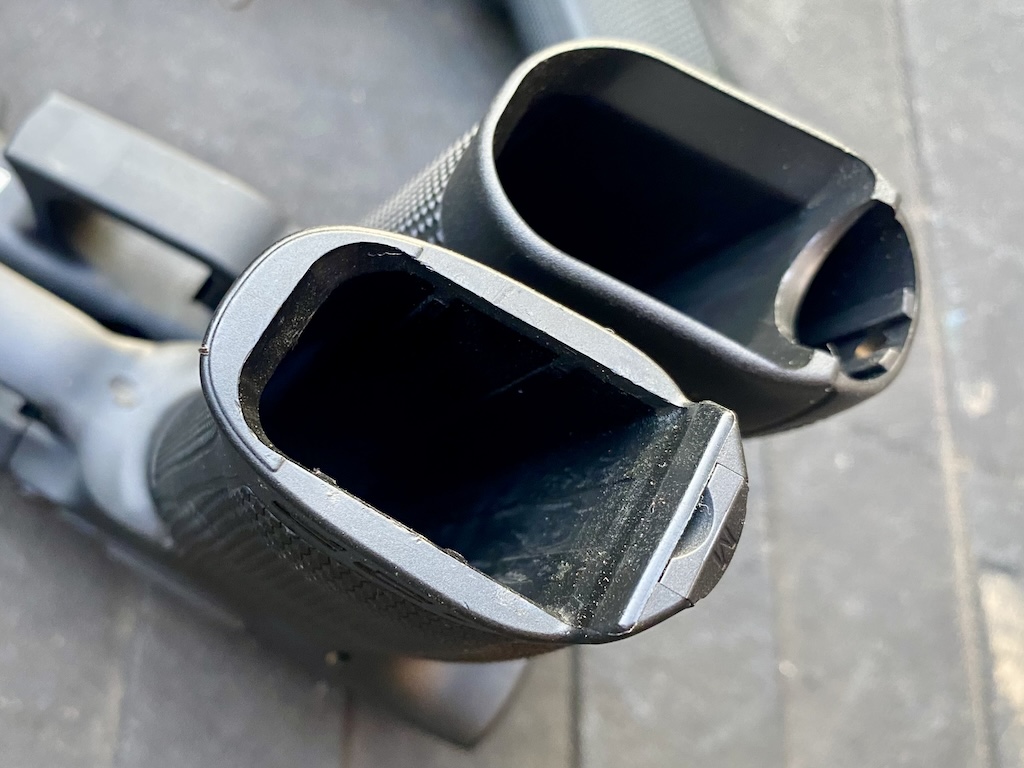An in-depth look at the Walther PDP and how it stacks up to your options in the 9mm pistol world.
There’s a shiny gold standard for performance in polymer-framed 9mm pistols, and it isn’t a standard set by Walther. Not yet, at least. While the company has seen its share of successes in the last few decades, they’ve been modest—until now. The PDP made a big impression when it launched, and it continues to impress. And for good reason.
What’s Unique about the Walther PDP
Over the course of this review, I’ll keep hammering on a couple of key defining features that place the Walther PDP at the top of an overly crowded landscape. Unlike some of the more blocky 9mms, the PDP feels unusually natural in the hand.
Perhaps because of that natural-feeling hand-grip purchase, the PDP is an unassuming performer much like the quiet nerd in high school who dominates the talent show with the his airtight moonwalk. The PDP is shaking up the 9mm game with its modular flexibility and it’s newly developed, razor-crisp, 2-stage Performance Duty Trigger.
Pistol Ergonomics
The grip panels feel precision-carved to match the contours of a proper shooting grip—like the frame was molded to the hand itself. Despite accommodating a steel double-stack mag, the grip narrows at the rear, allowing for a high, locked-in purchase near the bore axis. Drive the web of your hand into the deep ergonomic undercut of the beavertail, and the pistol naturally settles into a stable, recoil-controlling shooting position. Rather than feeling slab-sided or rectangular, the PDP’s grip showcases swells and divots that match the natural contour of your hand.
The mag release transition isn’t seamless, but it’s functional. Texturing carries over, adding minor friction, but the raised shelf ensures fast, no-look indexing.
The underside of the trigger guard is recessed to allow a higher, more ergonomic grip—avoiding pressure points on the middle finger’s inner webbing and reducing tension between the index and middle finger. This feature, once a DIY modification done with a Dremel tool to improve grip height and comfort, is now becoming standard on production pistols thanks to its popularity among performance shooters.
Walther PDP Controls
One of the first upgrades I give my carry guns is the mag release—and the PDP is no exception. I’d prefer a slightly extended button for a more positive, tactile engagement. Factory controls often play it safe, but that’s expected. The ideal sidearm is the one tailored to your hand, not the average.
You have the typical lengthy Walther slide-stop lever. The lever is easy to index and engage while maintaining firm purchase – unless your thumb is unusually short (I’m looking at you Megan Fox). Some slides seem to catch and stick too hard on their levers – not with the PDP series.
Then there’s the SuperTerrain Slide Serrations. Almost sounds like a bad time after nosediving down a slip n’ slide in Moab, Utah. These on the other hand are front and rear, angled, protruding slide serrations, featuring deep and wide cuts without the sharp bite when aggressively manipulating and pincering the slide. Contrary to the name, the feature delivers control, not punishment.
Performance Duty Trigger
Walther’s triggers have been setting the standard for production guns since the launch of the PPQ. The break is consistent and crisp with the initial pull being lighter of the two stages ensuring the shooter feels the distinct wall, at which point there’s only a short bit of travel needed to drop the hammer.
While many triggers feel mushy, the PDP’s Performance Duty Trigger (PDT) delivers a short, crisp pull with a clean break—more like snapping a tensioned line at 4.5lbs than depressing a sponge at whatever metric the Canadians use for squeezing sponges. I digress. The reset is exceptionally short and tactile, enabling rapid, repeatable follow-up shots. Whether you’re chasing speed or precision, the PDP earns a spot at the top of the list.
Accessories
One of the most important things to consider when buying a fantastic handgun is the availability of accessories. Many accessory brands hesitate to back niche or unproven platforms—but not with the PDP. The optic-ready slide doesn’t ship with a mounting plate, but C&H Precision offers adapter solutions, including direct-mount options that lower optic height for co-witnessing iron sights. Some models even come pre-equipped with an Aimpoint ACRO, ready for duty straight out of the box. Holster options are plentiful, with Safariland leading the way in retention. And for concealed carry, the PDP remains remarkably manageable.
Magazines may not be as widespread as Glock’s, but they’re still readily available through Walther’s site and a handful of reliable third-party retailers. The factory mags are stainless steel, rugged, and built to last—tough enough to double as improvised projectiles if needed. How many should you have? At least ten. And in a true “Winchester” (out of ammo) emergency, break glass and lob the mag at the head, not the whole pistol—channeling Tom Sizemore in Saving Private Ryan (Rest in Peace).
Walther PDP Range Day
The interchangeable backstrap concept isn’t new, but Walther executes it exceptionally well with the PDP. It ships with three backstraps—small, medium, and large—each altering the grip circumference by about 2–3mm, totaling up to a 6mm difference from smallest to largest. The effect is immediately noticeable in the hand, especially with the deeper palm swell on the larger sizes, which fills the void in your palm and locks the grip in place under recoil. Add to that the wraparound grip texture—aggressive but controlled—and the way the frame forces your hand high into the beavertail, and you’ve got a 9mm that feels unlike anything else in its class.
There’s almost no perceptible muzzle rise with either the 4” or 4.5” PDP. The longer barrel didn’t noticeably improve my accuracy—but then again, I’m not shooting these guns to punch perfect holes in paper with tight groupings. Even so, I shoot better with the PDP—despite having almost no experience with it—than I do with other pistols I’ve carried for years.
It’s wild—but I’ve seen others experience the same thing. Running my usual holster drills with the PDP, I was decently quick. But once I shifted to defensive drills, my split times surprised me—fast, with accurate follow-up shots right on target.
As far as duty ammo, I’m a fan of the LeHigh’s Penetrator rounds.
https://www.ammunitiontogo.com/20rds-9mm-underwood-115gr-xtreme-penetrator-ammo
However, on the range, you’ll want something that’s easier on the wallet. The PDP isn’t picky when it comes to steel-cased rounds: https://www.ammunitiontogo.com/1000rds-9mm-magtech-steel-115gr-fmj-ammo
Walther PDP Winning Contracts
Walther has never dominated the U.S. law enforcement market, but the PDP is beginning to shift that narrative. Its recent adoption by the Pennsylvania State Police—and even special forces units within the German Bundeswehr—proves it’s no longer just a dark horse contender.
The PDP offers a variety of factory configurations that help it stand out in a saturated field: compact models that accommodate smaller hands without sacrificing capacity, and options with threaded barrels for those running compensators or suppressors. But what’s really helping the PDP gain more ground is the combination of rock-solid reliability and exceptional shootability.
While all duty guns are expected to function flawlessly, the PDP distinguishes itself with intuitive ergonomics that promote natural point of aim and faster target reacquisition—critical traits when decisions happen under duress.
Why is the Walther PDP Gaining Traction?
Prices on these begin at $699 MSRP, which means you’ll find them on shelves for a bit less, or quite a bit more if you opt for the tricked-out models that come from the factory. If that IRS tax return is looking like a bike combo lock, they make PDPs with steel frames.
Walther’s latest entry into the 9mm market is a contender. It makes some of its direct competition feel like outdated and unimproved innovations. The culmination of what Walther has accomplished will force some of the more stalwart bigs to change, and change fast, or guns like the PDP will do what Walmart did to Sears.
All told, Walther’s on to something. As these big legacy brands continue to churn out modest improvements to the status quo, companies like Walther are redefining what’s possible, and it looks disruptive.
1: Shooting the PDP couldn’t be any more intuitive. The low bore axis, excellent ergonomics, and responsive trigger make Walther’s new do-it-all handgun close to perfect.
2: Sizing will be the one point of familiarity with Walther’s design. The PDPs follow the standard size dimensions for most double stack duty guns.
3: If you want a gun that feels graceful in your hand, the PDP is it.
4: A few grip panel options accommodate precise sizing. Keep this in mind if you’re eyeing the PDP at the gun counter where it may be in its default size configuration.
5: The PDP’s tetrahedron grip texture is unconventional, but—like every element of the pistol—it’s engineered with a clear purpose and functional intent.
6: The mag wells are slightly flared. Extended mag wells are a factory option for optimizing faster reload times.
7: Steel-bodied mags come in standard sizes: 10, 15, 17, 18. Weighted bases are available as well.
